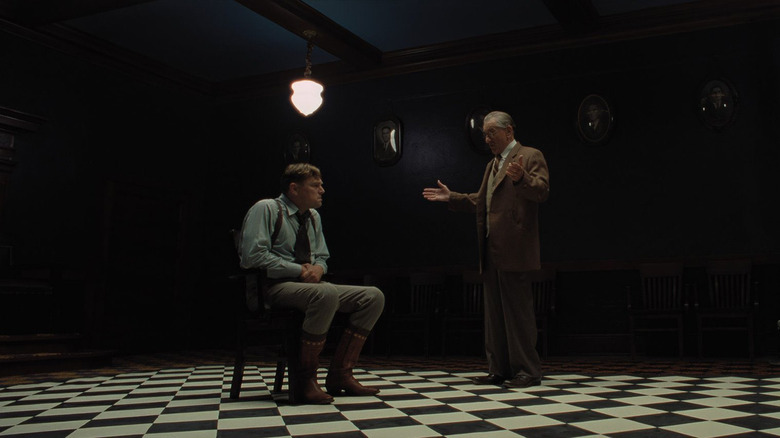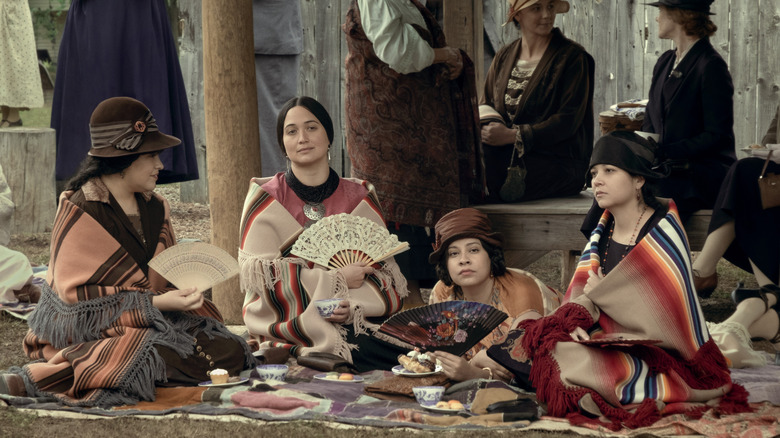Martin Scorsese Targets A Very Modern Pop Culture Trend In Killers Of The Flower Moon
This article contains spoilers for "Killers of the Flower Moon."
Martin Scorsese is an avid cinephile, a proper defender of cinematic art. Not only has the filmmaker helped produce independent international movies like "Happy as Lazzaro" and "A Ciambra," he also has three nonprofit organizations aimed at preserving and restoring cinema.
Scorsese has made documentaries about great films and directors, and a big chunk of his film "Hugo" is devoted to the artistry behind the magic of movies. We see Georges Méliès crafting fantastical films, and a spectacular recreation of the Lumière brothers' "Arrival of a Train at La Ciotat." That film is not only about the birth of cinema but about something personal to Scorsese — the preservation of old art. That idea is carried over to the best scene in Scorsese's latest film, "Killers of the Flower Moon."
The film tells the story of the Osage Indian murders, a series of unsolved murders in the 1920s aimed at taking over the land and wealth of members of the Osage nation. At the time, the Osage had become wealthy due to their land being rich in oil. The film's third act is about the trial of the man who led this murderous effort by the recently founded Bureau of Investigation. The finale of the film, then, retells the entire story of "Killers of the Flower Moon" via a radio play. Scorsese shows the making of the radio play with the same reverence he showed Méliès' work, all while targeting a very modern pop culture trend.
Tonight's entertainment
The scene is reminiscent of last year's "Babylon," an underrated film about the tail end of the silent film era. Among many a scene of debauchery and a surprise appearance by Tobey Maguire as a coke gremlin, there are also wonderfully crafted scenes showing the making of films. First, there are scenes showing how silent movies were made and how there could be several productions physically lying one next to the other. Then, how sound changed everything, quickly, and not necessarily for the better. Indoor shooting, the focus on specific marks, dialects, and the introduction of sound booths all lead to shenanigans.
In "Killers of the Flower Moon" we see the arduous work behind the making of a radio play; the voice actors coming in for a single line, and the engineers craft the smallest sound effects. There's a reverence for the craft, even if Scorsese draws a line between the art and something less magical and more modern. The whole scene feels like a direct shot against modern true crime podcasts. We see the narrator sensationalize the tragedy we spent three hours witnessing and turn it into a spectacle, with actors portraying the people we just saw die. It is a powerful indictment of our current obsession with turning tragedy into entertainment.
While the play's events follow the story we saw unfold, it is still a piece of entertainment. It undermines the tragedy it portrays for commercial value, such as when one of the voice actors specifically mentions lighting up a Lucky Strike cigarette, since they sponsor the show. None of them cares about the tragedy of the Osage, they are showmen and sensationalists telling a story that doesn't belong to them for entertainment. And yet, there is no denying the craft, the artistry behind that entertainment.

